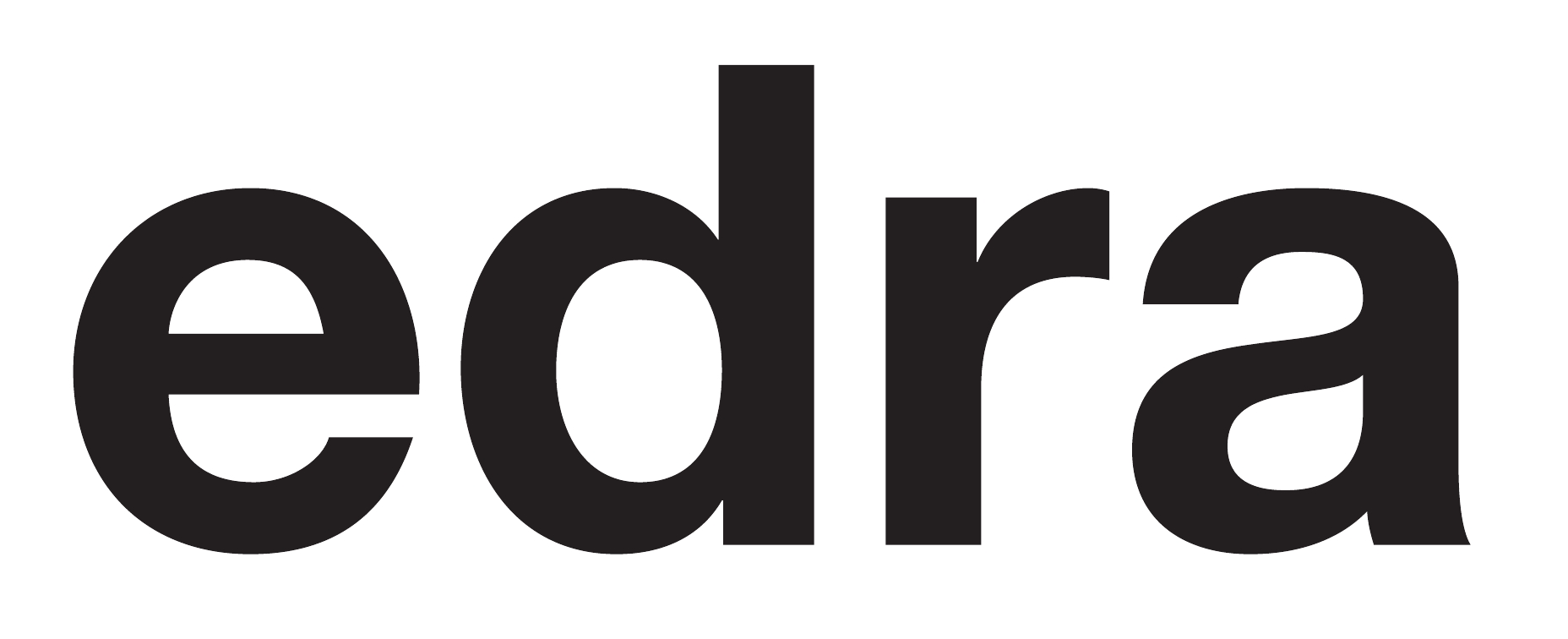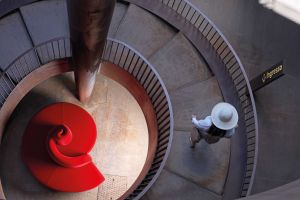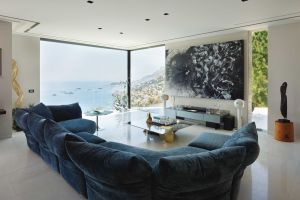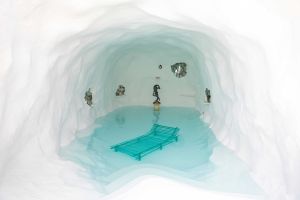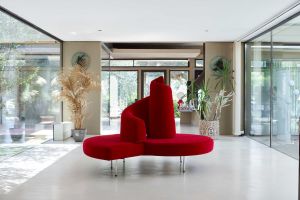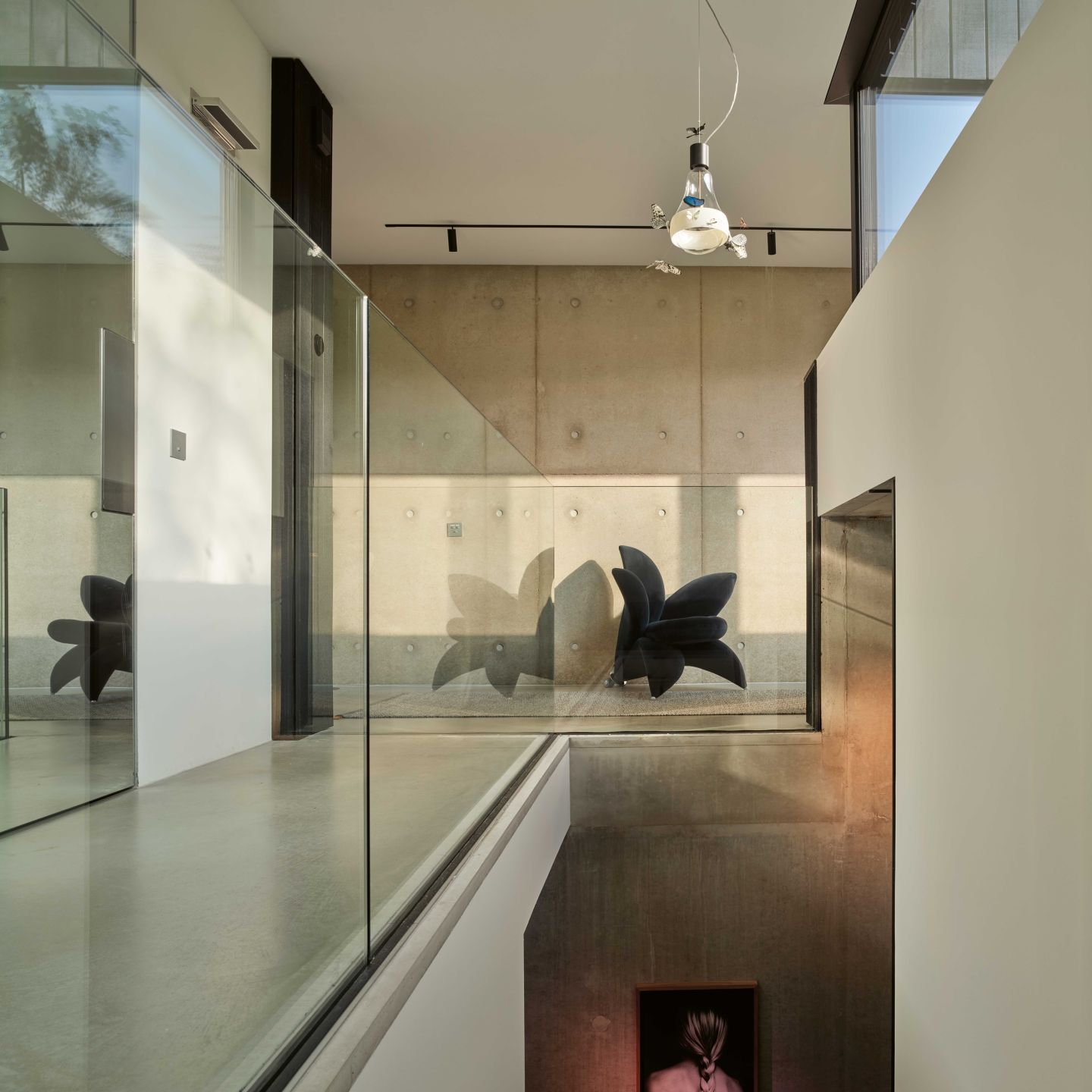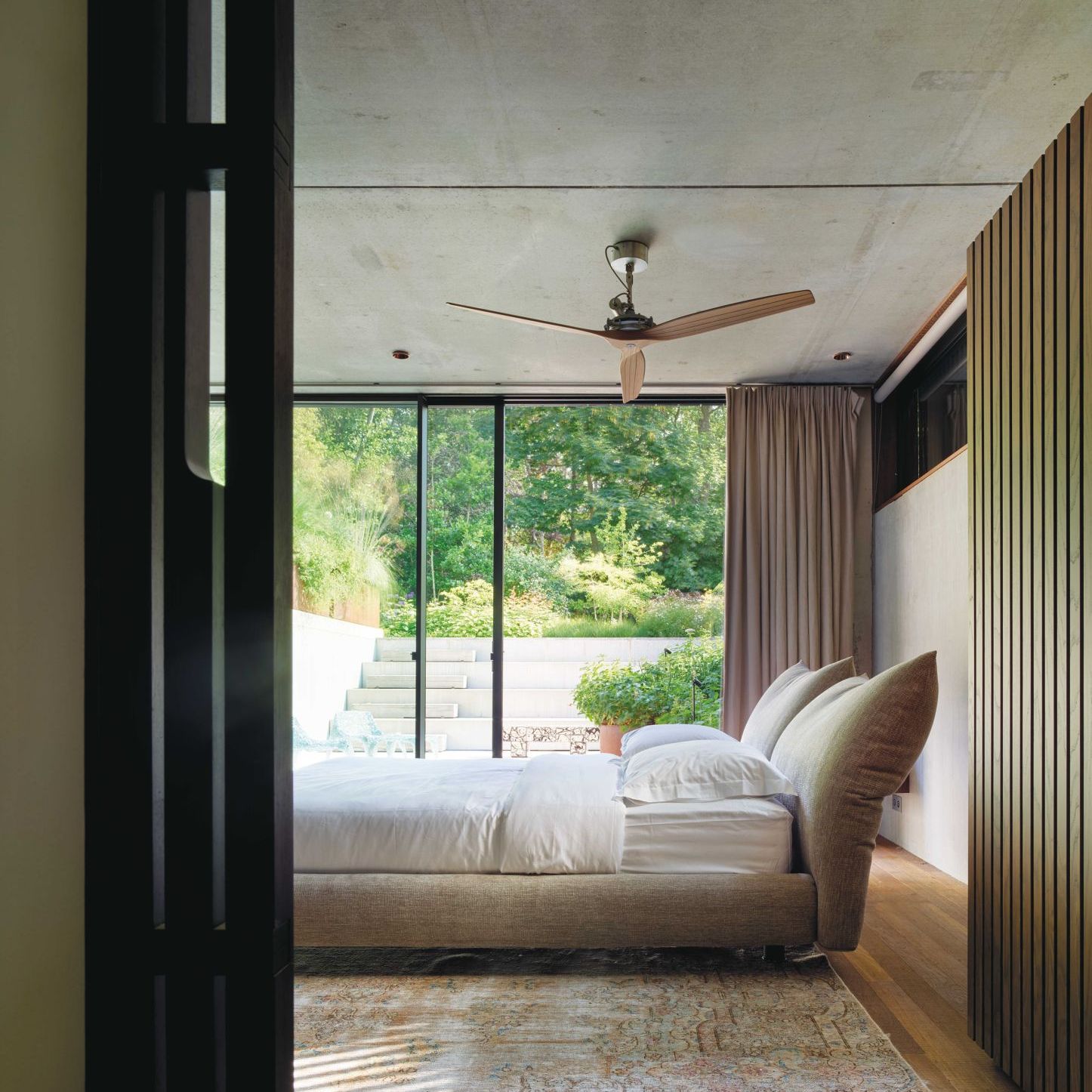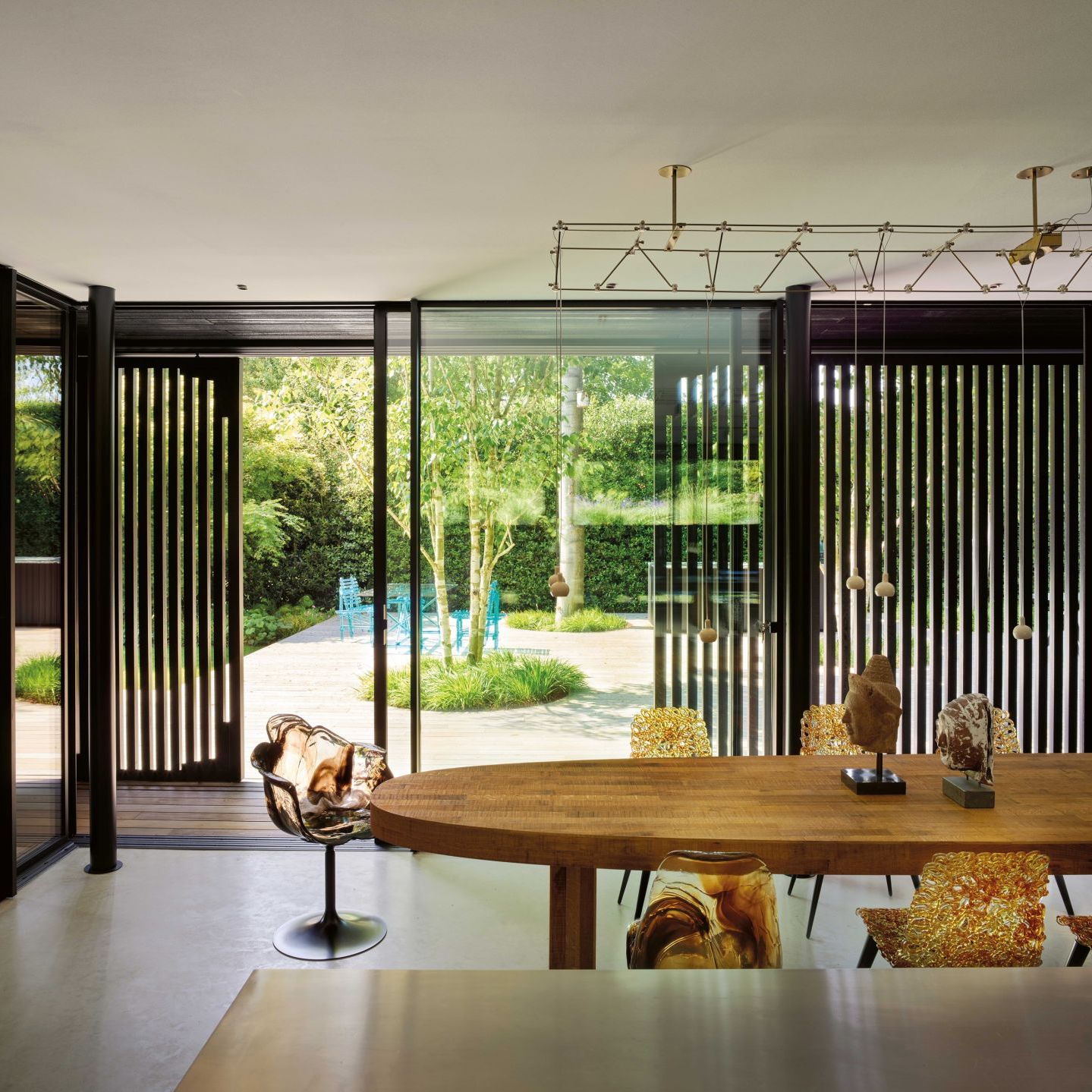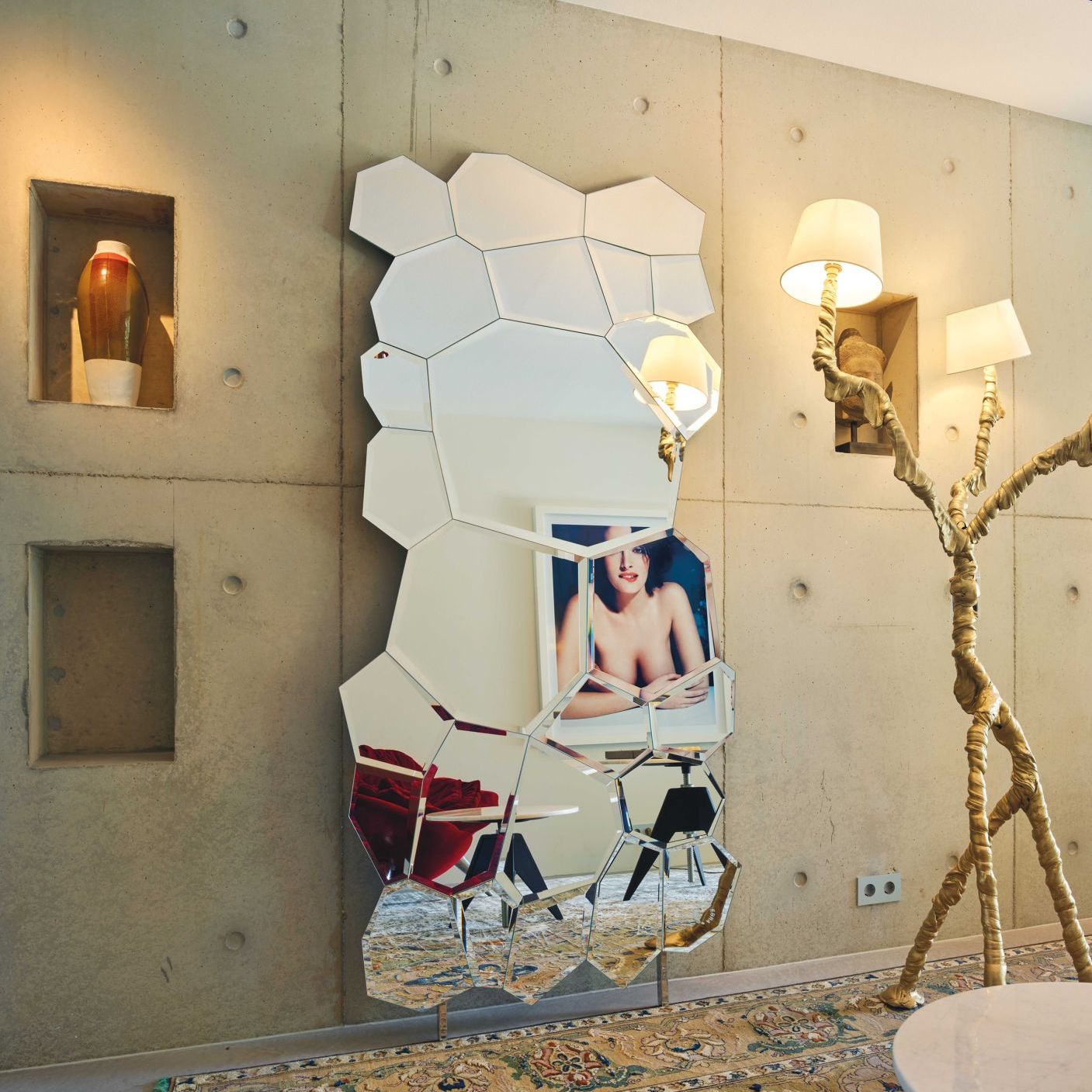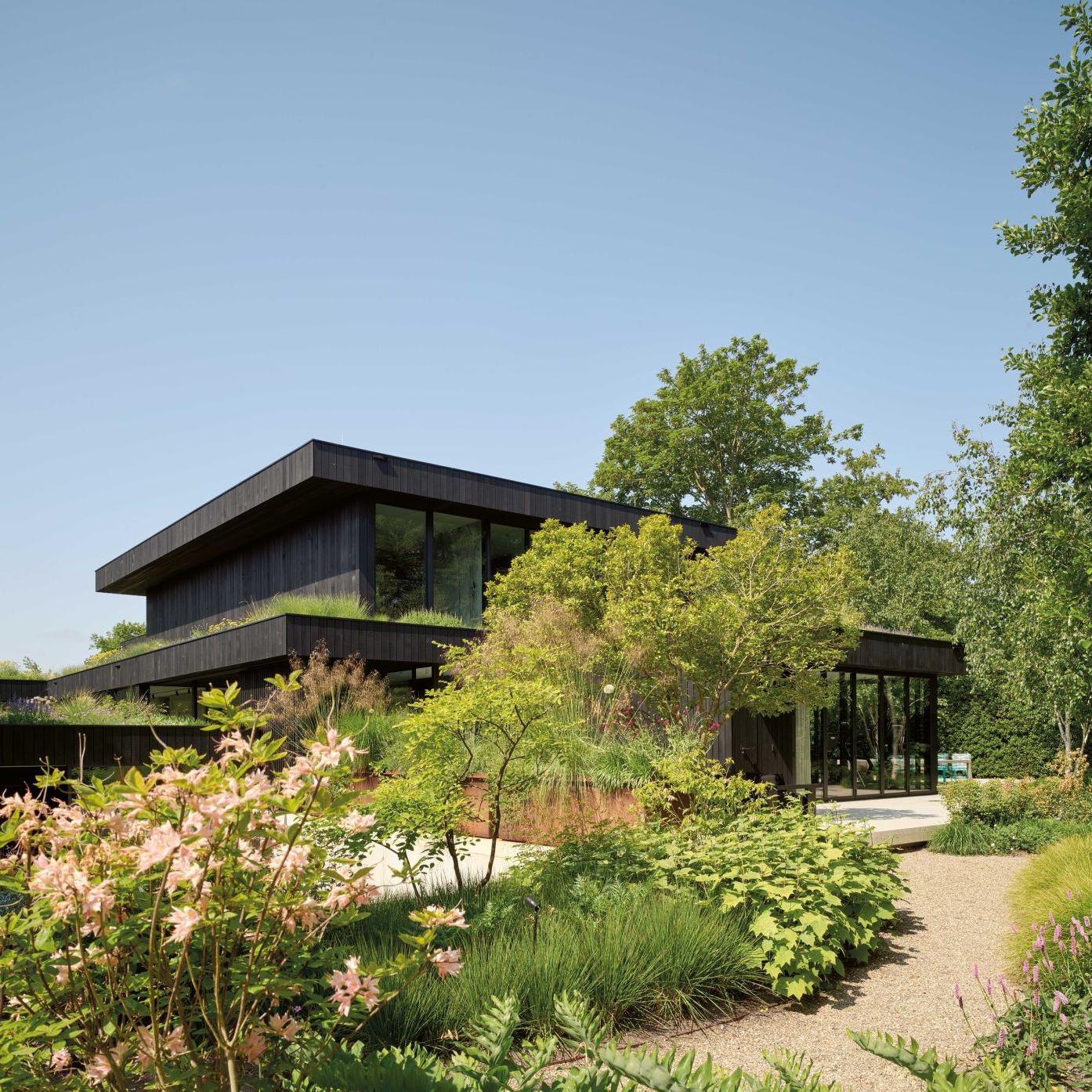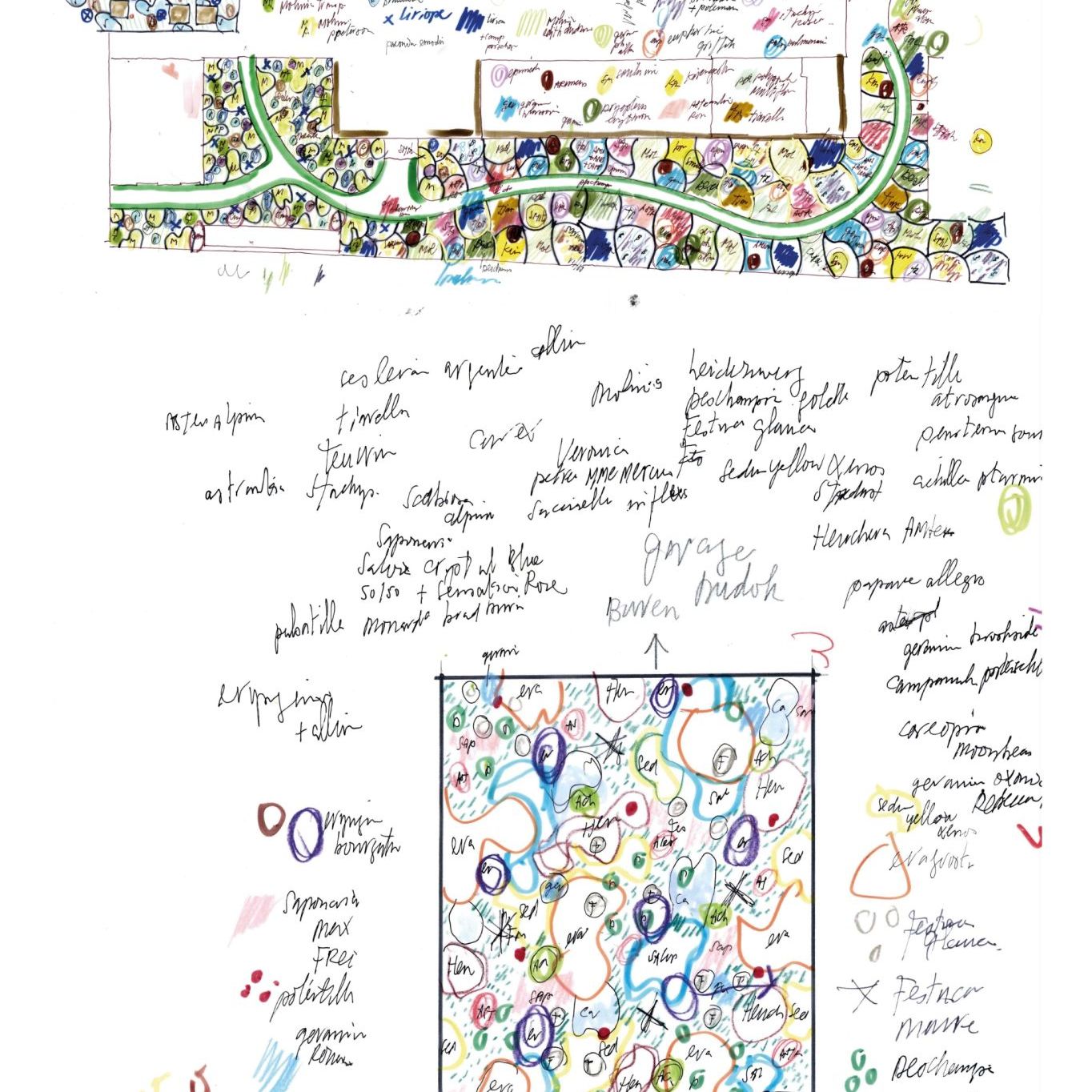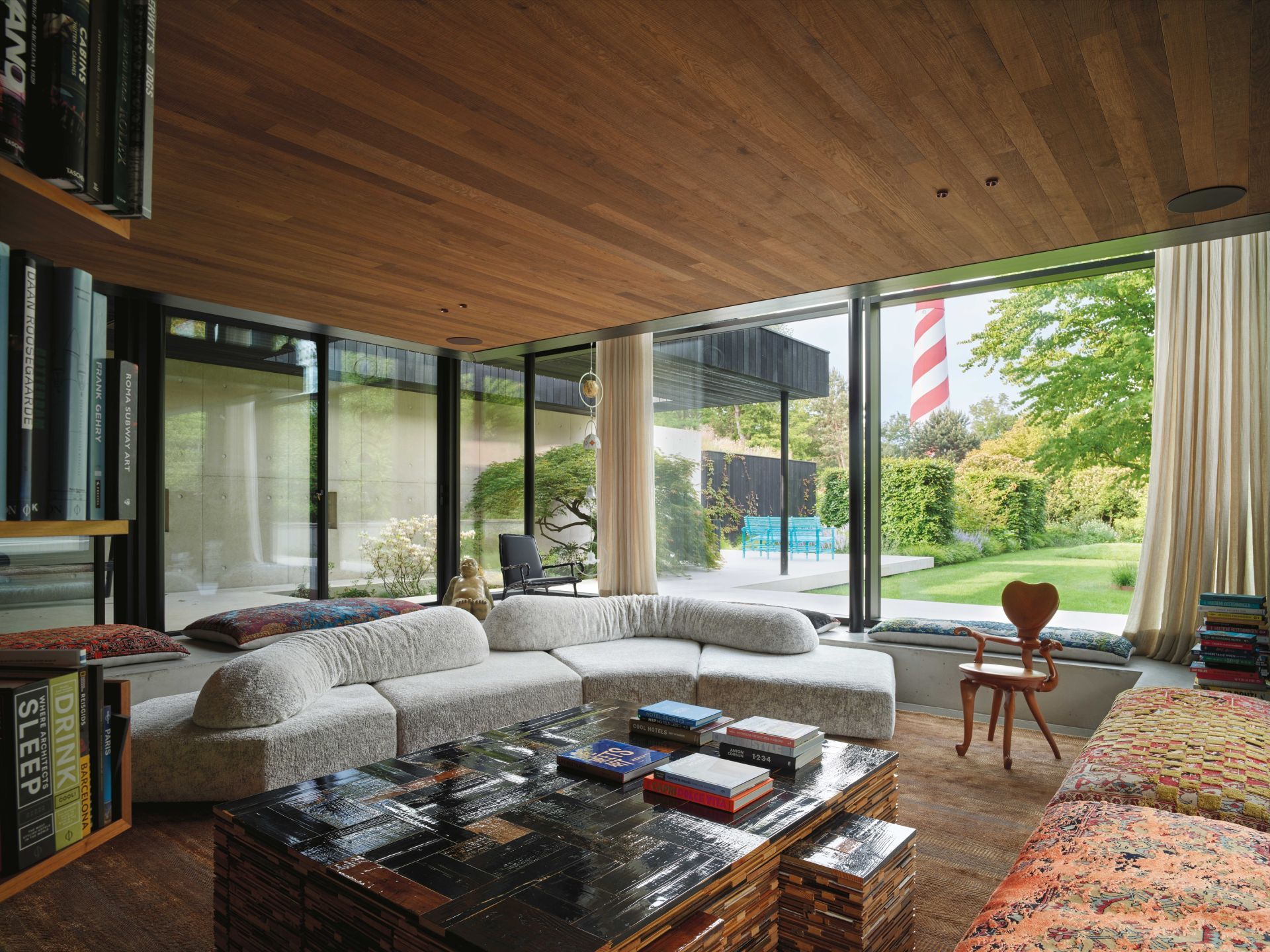
On the Rocks. ЛЂ л┤лИл▓л░лйл░ лЙЛѓл║ЛђЛІл▓л░лхЛѓЛЂЛЈ л┐л░лйлЙЛђл░л╝лйЛІл╣ л▓лИл┤ лйл░ л┐ЛђлЙЛЂЛѓЛђл░лйЛЂЛѓл▓лЙ л│лЙЛЂЛѓлИлйлЙл╣ ЛЂ Лђл░л▒лЙЛѓл░л╝лИ Maarten Baas, Piet Hein Eek лИ Anton Gaudì.
лЙл║ЛѓЛЈл▒ЛђЛЈ 2023
Laura Arrighi
лДлИЛЂЛѓЛІлх лЙл▒Лілхл╝ЛІ
лЪЛђлхл▓лЙЛЂЛЁлЙл┤лйЛІл╣ л┤лЙл╝ л▓ л╗лхЛЂЛЃ, ЛЂл▒л╗лИлХл░ЛјЛЅлИл╣ ЛЂ л┐ЛђлИЛђлЙл┤лЙл╣
лЌл░л│лЙЛђлЙл┤лйЛІл╣ л┤лЙл╝ ЛЂ л▓лИл┤лЙл╝ лйл░ л╝л░ЛЈл║ л▓ л╗лхЛЂлИЛЂЛѓлЙл╣ ЛЄл░ЛЂЛѓлИ л│лЙл╗л╗л░лйл┤ЛЂл║лИЛЁ л┤Лјлй л▓ Лђл░л╣лЙлйлх лЉЛЃЛђл│-лЦл░л░л╝ЛЂЛѓлхл┤лх л▒ЛІл╗ ЛЂл┐ЛђлЙлхл║ЛѓлИЛђлЙл▓л░лй л░ЛђЛЁлИЛѓлхл║ЛѓлЙЛђлЙл╝ лЉл░ЛђЛѓлЙл╝ лњлЙЛЂлЙл╝ лИ л╗л░лйл┤Лѕл░ЛёЛѓлйЛІл╝ л┤лИлил░л╣лйлхЛђлЙл╝ лЪлИЛѓлЙл╝ лБл┤лЙл╗ЛїЛёлЙл╝. лЌл░л║л░лиЛЄлИл║ л┐лЙлХлхл╗л░л╗ л┐ЛђлЙлхл║Лѓ л┤лЙл╝л░ лЙЛЂлйлЙл▓л░Лѓлхл╗ЛїлйлЙл╣ л║лЙлйЛЂЛѓЛђЛЃл║ЛєлИлИ ЛЂ ЛЂлЙЛЁЛђл░лйлхлйлИлхл╝ л┤лИлйл░л╝лИл║лИ, лйлх ЛЂл╗лИЛѕл║лЙл╝ л▓ЛІЛЂлЙл║лИл╣ лИ л▓л┐лИЛЂЛІл▓л░ЛјЛЅлИл╣ЛЂЛЈ л▓ лЙл║ЛђЛЃлХл░ЛјЛЅЛЃЛј ЛЂЛђлхл┤ЛЃ. люлхЛЂЛѓлЙ л┤л╗ЛЈ лЙЛѓл┤ЛІЛЁл░, л▓ л║лЙЛѓлЙЛђлЙл╝ лЙл▒лИЛѓл░Лѓлхл╗Лї л╗Лјл▒лЙл│лЙ л▓лЙлиЛђл░ЛЂЛѓл░, ЛЄЛЃл▓ЛЂЛѓл▓лЙл▓л░л╗ л▒ЛІ ЛЂлхл▒ЛЈ л║л░л║ л┤лЙл╝л░. лњлИл╗л╗л░ л┐лЙЛЂЛѓЛђлЙлхлйл░ лйл░ л┐ЛђЛЈл╝лЙЛЃл│лЙл╗ЛїлйлЙл╝ ЛЃЛЄл░ЛЂЛѓл║лх лилхл╝л╗лИ, ЛЄЛѓлЙ л┐лЙлил▓лЙл╗лИл╗лЙ ЛЂл┐ЛђлЙлхл║ЛѓлИЛђлЙл▓л░ЛѓЛї ЛЇЛѓл░лХлИ ЛЂ Лѓл░л║лИл╝лИ л▓лИл┤л░л╝лИ, л║лЙЛѓлЙЛђЛІлх л┐Лђлхл┤л╗л░л│л░ЛјЛѓ лхлх лЙл▒лИЛѓл░Лѓлхл╗ЛЈл╝ л║л░л║ лйл░л╗лИЛЄлИлх л┐ЛђлЙЛЂЛѓЛђл░лйЛЂЛѓл▓ л┤л╗ЛЈ ЛЃлхл┤лИлйлхлйлИЛЈ, Лѓл░л║ лИ л▓лЙлил╝лЙлХлйлЙЛЂЛѓлИ л┤л╗ЛЈ ЛЂлЙл▓л╝лхЛЂЛѓлйлЙл│лЙ л▓Лђлхл╝ЛЈл┐Лђлхл┐ЛђлЙл▓лЙлХл┤лхлйлИЛЈ.
лЉл░ЛђЛѓ лњлЙЛЂ л┤лхл╗лИЛѓЛЂЛЈ, ЛЄЛѓлЙ л▓л┤лЙЛЁлйлЙл▓лхлйлИлх л┤л╗ЛЈ ЛЂлЙлил┤л░лйлИЛЈ лИл╝лхлйлйлЙ л▓ЛІЛѓЛЈлйЛЃЛѓлЙл╣ ЛёлЙЛђл╝ЛІ л┤лЙл╝л░ ЛђлЙл┤лИл╗лЙЛЂЛї лИли лЙл▒Лђл░ЛЅлхлйлИЛЈ л║ л┐ЛђлЙЛѕл╗лЙл╝ЛЃ лЙл┐ЛІЛѓЛЃ, л║лЙл│л┤л░, ЛЃЛЄл░ЛЂЛї л▓ л»л┐лЙлйлИлИ ЛѓЛђлИл┤Лєл░ЛѓЛї л╗лхЛѓ лйл░лил░л┤, лЙлй л┐лЙЛЂлхЛѓлИл╗ ЛЂл▓ЛЈЛѓЛІлйлИ лџлИлЙЛѓлЙ «ЛЂ лИЛЁ л▓лхл╗лИл║лЙл╗лхл┐лйЛІл╝лИ ЛЁЛђл░л╝л░л╝лИ, лЙЛѓл║ЛђЛІл▓л░ЛјЛЅлИл╝лИ л▒лхЛЂЛЄлИЛЂл╗лхлйлйЛІлх л▓лИлиЛЃл░л╗ЛїлйЛІлх л┐лхЛђЛЂл┐лхл║ЛѓлИл▓ЛІ».
лўлиЛЃЛЄлхлйлИлх л▓лИлиЛЃл░л╗ЛїлйлЙл╣ л┐лхЛђЛЂл┐лхл║ЛѓлИл▓ЛІ лИ лИЛЂЛЂл╗лхл┤лЙл▓л░лйлИлх л╝л░ЛѓлхЛђлИл░л╗лЙл▓ л▓ л║лЙлйЛѓлхл║ЛЂЛѓлх лХлИлилйлИ лЙл▒лИЛѓл░Лѓлхл╗лхл╣ л▒ЛЃл┤ЛЃЛЅлхл│лЙ л┤лЙл╝л░ ЛЈл▓л╗ЛЈЛјЛѓЛЂЛЈ л▓лИлилИЛѓлйлЙл╣ л║л░ЛђЛѓлЙЛЄл║лЙл╣ ЛЇЛѓлЙл│лЙ л░ЛђЛЁлИЛѓлхл║ЛѓлЙЛђл░, лИ л║лЙлйЛєлхл┐ЛєлИлИ Gesamtkunstwerk лИл╗лИ лил░л║лЙлйЛЄлхлйлйлЙл│лЙ л┐ЛђлЙЛЂЛѓЛђл░лйЛЂЛѓл▓л░. лЪЛђлЙл┤лЙл╗лХл░ЛЈ, лЙлй л▓ЛЂл┐лЙл╝лИлйл░лхЛѓ: «л» л▓л┐лхЛђл▓ЛІлх лЙЛЅЛЃЛѓлИл╗ л▓л░лХлйлЙЛЂЛѓЛї Лєлхл╗лЙЛЂЛѓлйлЙл│лЙ л▓лИл┤лхлйлИЛЈ. люлйлх л┐лЙл▓лхлил╗лЙ ЛЂ л║л╗лИлхлйЛѓл░л╝лИ, л║лЙЛѓлЙЛђЛІлх л┐лЙлил▓лЙл╗лИл╗лИ л╝лйлх ЛЂл┐ЛђлЙлхл║ЛѓлИЛђлЙл▓л░ЛѓЛї лИ л┤лЙл╝, лИ лИлйЛѓлхЛђЛїлхЛђЛІ, л░ Лѓл░л║лХлх л▓ЛІл▒Лђл░ЛѓЛї л┐Лђлхл┤л╝лхЛѓЛІ лЙл▒ЛЂЛѓл░лйлЙл▓л║лИ, л║лЙЛѓлЙЛђЛІлх ЛЄл░ЛЂЛѓлИЛЄлйлЙ л▒ЛІл╗лИ ЛЂл┐ЛђлЙлхл║ЛѓлИЛђлЙл▓л░лйЛІ л╝лйлЙл╣ лИ ЛЂл┤лхл╗л░лйЛІ лйл░ лил░л║л░ли, л░ ЛЄл░ЛЂЛѓлИЛЄлйлЙ л▓ЛІл▒Лђл░лйЛІ лИли л║л░Лѓл░л╗лЙл│лЙл▓». лбл░л║лЙл╣ л┐лЙл┤ЛЁлЙл┤ л║ Лђл░л▒лЙЛѓлх л▓лЙлил╝лЙлХлхлй л┐ЛђлИ лйл░л╗лИЛЄлИлИ лЙЛЂлЙл▒лЙл│лЙ Лѓл░л╗л░лйЛѓл░ лИ ЛЄЛЃл▓ЛЂЛѓл▓лИЛѓлхл╗ЛїлйлЙЛЂЛѓлИ, л░ Лѓл░л║лХлх ЛЄлхЛѓл║лИл╝ л▓ЛІЛЂЛѓЛђл░лИл▓л░лйлИлхл╝ л▓ЛЂлхл│лЙ л┐ЛђлЙЛєлхЛЂЛЂл░ лхл│лЙ ЛЂлЙлил┤л░лйлИЛЈ, лЙЛѓл┐Лђл░л▓лйлЙл╣ ЛѓлЙЛЄл║лЙл╣ л║лЙЛѓлЙЛђлЙл│лЙ ЛЈл▓л╗ЛЈлхЛѓЛЂЛЈ л┐ЛђлхлХл┤лх л▓ЛЂлхл│лЙ л▓ЛЂЛѓЛђлхЛЄл░ ЛЂ л╗Лјл┤Лїл╝лИ лИ л┤лИл░л╗лЙл│. «л» ЛЄЛЃл▓ЛЂЛѓл▓ЛЃЛј, ЛЄЛѓлЙ ЛЇЛѓлЙ ЛѓлЙ, ЛЄЛѓлЙ лЙл▒Лілхл┤лИлйЛЈлхЛѓ л╝лхлйЛЈ ЛЂ Edra: л┤л░ЛѓЛї ЛЂлхл▒лх л▓Лђлхл╝ЛЈ л▓ЛІЛЂл╗ЛЃЛѕл░ЛѓЛї лИл┤лхлИ, лЙл▒ЛЂЛЃл┤лИЛѓЛї лИ ЛѓЛЅл░Лѓлхл╗ЛїлйлЙ л▓ЛЂлх л┐ЛђлЙл┤ЛЃл╝л░ЛѓЛї, л┐ЛђлхлХл┤лх ЛЄлхл╝ л┐ЛђлИЛЂЛѓЛЃл┐лИЛѓЛї л║ л┤лИлил░л╣лйЛЃ».
лњ л╝лИЛђлх ЛЂЛѓЛђлхл╝лИЛѓлхл╗ЛїлйЛІЛЁ ЛЂл║лЙЛђлЙЛЂЛѓлхл╣, л║лЙл│л┤л░ л╗Лјл▒ЛЃЛј лИлйЛёлЙЛђл╝л░ЛєлИЛј Лѓл░л║ л╗лхл│л║лЙ л┐лЙл╗ЛЃЛЄлИЛѓЛї, лњлЙЛЂ л┐лЙл┤ЛЄлхЛђл║лИл▓л░лхЛѓ, лйл░ЛЂл║лЙл╗Лїл║лЙ ЛєлхлйлйлЙ ЛЃл┤лхл╗лИЛѓЛї л▓Лђлхл╝ЛЈ л┤л╗ЛЈ ЛЂлЙлил┤л░лйлИЛЈ ЛЄлхл│лЙ-ЛѓлЙ л┤лхл╣ЛЂЛѓл▓лИЛѓлхл╗ЛїлйлЙ ЛЃлйлИл║л░л╗ЛїлйлЙл│лЙ лИ лЙЛЂлйлЙл▓л░Лѓлхл╗ЛїлйлЙл│лЙ, ЛЄЛѓлЙ лЙЛЂЛѓл░лйлхЛѓЛЂЛЈ ЛЂ л▓л░л╝лИ лйл░ л┤лЙл╗л│лИлх л│лЙл┤ЛІ. лћлЙл╝ л▓ лЉЛЃЛђл│- лЦл░л░л╝ЛЂЛѓлхл┤лх л┤л░лхЛѓ л┐лЙЛЄЛЃл▓ЛЂЛѓл▓лЙл▓л░ЛѓЛї ЛЇЛѓлЙ л░Лѓл╝лЙЛЂЛёлхЛђлЙл╣ л│лЙЛЂЛѓлхл┐ЛђлИлИл╝ЛЂЛѓл▓л░, ЛЂл┐лЙл║лЙл╣ЛЂЛѓл▓лИЛЈ лИ л▒лхлил╝ЛЈЛѓлхлХлйлЙЛЂЛѓлИ. лАлхл║ЛђлхЛѓ лил░л║л╗ЛјЛЄл░лхЛѓЛЂЛЈ л▓ ЛѓлЙл╝, ЛЄЛѓлЙл▒ЛІ л▓лЙЛЂл┐ЛђлИлйлИл╝л░ЛѓЛї л┐ЛђлЙлхл║Лѓ лйлх л║л░л║ лил░л▓лхЛђЛѕлхлйлйЛІл╣, л░ л║л░л║ ЛѓлЙ, ЛЄЛѓлЙ ЛѓЛђл░лйЛЂЛёлЙЛђл╝лИЛђЛЃлхЛѓЛЂЛЈ лИ лЙл▒ЛђлхЛѓл░лхЛѓ лЙл║лЙлйЛЄл░Лѓлхл╗ЛїлйЛІлх ЛЄлхЛђЛѓЛІ л▓ л┐ЛђлЙЛєлхЛЂЛЂлх ЛЂлЙлил┤л░лйлИЛЈ. «л» л╝лйлЙл│лЙ ЛђлИЛЂЛЃЛј лЙЛѓ ЛђЛЃл║лИ, лИ л┐ЛђлЙЛєлхЛЂЛЂ ЛђлЙлХл┤лхлйлИЛЈ ЛЇЛѓлЙл│лЙ л┤лЙл╝л░ л╝лЙлХлйлЙ л┐ЛђлЙЛЂл╗лхл┤лИЛѓЛї л▓ л╝лЙлИЛЁ ЛЂл╗ЛЃЛЄл░л╣лйЛІЛЁ ЛЇЛЂл║лИлил░ЛЁ. лъЛѓлйлЙЛѕлхлйлИЛЈ ЛЂ л║л╗лИлхлйЛѓл░л╝лИ лЙЛЄлхлйЛї л▓л░лХлйЛІ л┤л╗ЛЈ л╝лхлйЛЈ, л░ л▓ л┤л░лйлйлЙл╝ ЛЂл╗ЛЃЛЄл░лх Лѓлхл╝ л▒лЙл╗лхлх, л▓лхл┤Лї л▓л╗л░л┤лхл╗лхЛє - л╝лЙл╣ л▒лЙл╗ЛїЛѕлЙл╣ л┤ЛђЛЃл│. лџлЙл│л┤л░ лЙлй л┐ЛђлИл│л╗л░ЛЂлИл╗ л╝лхлйЛЈ л▓лил│л╗ЛЈлйЛЃЛѓЛї лйл░ ЛЃЛЄл░ЛЂЛѓлЙл║ лилхл╝л╗лИ, ЛЃ лйлхл│лЙ ЛЃлХлх л▒ЛІл╗ л│лЙЛѓлЙл▓ЛІл╣ л┐ЛђлЙлхл║Лѓ. лЮлЙ лЙлй лйлх л▒ЛІл╗ л▓ лйлхл╝ ЛЃл▓лхЛђлхлй. лњЛІЛЂл╗ЛЃЛѕл░л▓ лхл│лЙ, ЛЈ, л▓ л┐лЙл┐ЛІЛѓл║л░ЛЁ л┐лЙлйЛЈЛѓЛї, ЛЄЛѓлЙ лХлх лЙлй ЛЁлЙЛЄлхЛѓ лйл░ ЛЂл░л╝лЙл╝ л┤лхл╗лх, ЛЄлхЛђлхли л┐ЛЈЛѓЛї л╝лИлйЛЃЛѓ ЛЂл┤лхл╗л░л╗ л▒ЛІЛЂЛѓЛђЛІл╣ лйл░л▒ЛђлЙЛЂлЙл║ ЛЂ лЙЛѓЛђл░лХлхлйлИлхл╝ лЙл▒ЛЅлхл╣ лИл┤лхлИ лИ ЛЁл░Лђл░л║ЛѓлхЛђл░ лхл│лЙ л▒ЛЃл┤ЛЃЛЅлхл│лЙ л┤лЙл╝л░. лълй ЛЂл║л░лил░л╗: «лЉл░ЛђЛѓ, ЛЈ Лѓлхл▒лх л┤лЙл▓лхЛђЛЈЛј».
люлйлх лйЛђл░л▓лИЛѓЛЂЛЈ л┤лИЛЂл║ЛЃЛѓлИЛђлЙл▓л░ЛѓЛї, л▓лйлЙЛЂлИЛѓЛї л┐Лђл░л▓л║лИ лИ л┤лЙЛђл░л▒л░ЛѓЛІл▓л░ЛѓЛї. лГЛѓлЙ лхЛЂЛѓлхЛЂЛѓл▓лхлйлйЛІл╣ л┐ЛђлЙЛєлхЛЂЛЂ, л║лЙЛѓлЙЛђЛІл╣ лйлх л┐Лђлхл║Лђл░ЛЅл░лхЛѓЛЂЛЈ л┤лЙ лЙл║лЙлйЛЄл░лйлИЛЈ Лђл░л▒лЙЛѓЛІ лйл░л┤ л┐ЛђлЙлхл║ЛѓлЙл╝», - л┐ЛђлЙл┤лЙл╗лХл░лхЛѓ л░ЛђЛЁлИЛѓлхл║ЛѓлЙЛђ, - «ЛЈ л┐Лђлхл┤ЛЂЛѓл░л▓л╗ЛЈл╗ ЛЂлхл▒лх, л║л░л║ л▒ЛЃл┤лхЛѓ л▓ЛІл│л╗ЛЈл┤лхЛѓЛї л┤лЙл╝. люЛІЛЂл╗лхлйлйлЙ ЛЈ л┐ЛђлЙл│ЛЃл╗лИл▓л░л╗ЛЂЛЈ л┐лЙ лйлхл╝ЛЃ, л┐ЛђлЙл┤ЛЃл╝ЛІл▓л░ЛЈ лхл│лЙ ЛЇЛЂЛѓлхЛѓлИл║ЛЃ лИ ЛёЛЃлйл║ЛєлИлЙлйл░л╗. л» лЙЛѓл║ЛђЛІл▓л░л╗ л┤л▓лхЛђлИ, л┐лЙл▓лЙЛђл░ЛЄлИл▓л░л╗ лил░ ЛЃл│лЙл╗, л│л░л┤л░ЛЈ, ЛЄЛѓлЙ ЛЈ ЛЃл▓лИлХЛЃ. л» лйлх л┐ЛђлЙлхл║ЛѓлИЛђлЙл▓л░л╗ лЙл▒лЙл╗лЙЛЄл║ЛЃ л┐ЛђлЙЛЂЛѓЛђл░лйЛЂЛѓл▓л░, л║лЙЛѓлЙЛђлЙлх л┐лЙлилХлх лил░л┐лЙл╗лйлИЛѓЛЂЛЈ л┐Лђлхл┤л╝лхЛѓл░л╝лИ. л» лйл░ЛЄл░л╗ л┐ЛђлЙлхл║ЛѓлИЛђлЙл▓л░ЛѓЛї лИлилйЛЃЛѓЛђлИ, ЛЂ лИлиЛЃЛЄлхлйлИЛЈ л┤лЙл╝л░ЛѕлйлИЛЁ ЛђлИЛѓЛЃл░л╗лЙл▓ - ЛЂлИл┤лхЛѓЛї, лЙЛѓл┤ЛІЛЁл░ЛѓЛї, л╗лхлХл░ЛѓЛї, л┐л╗л░л▓л░ЛѓЛї, л┐лИЛѓЛї л║лЙЛёлх л┐лЙ ЛЃЛѓЛђл░л╝», ЛЂлЙлил┤л░л▓л░ЛЈ ЛЂл▓лЙлхл│лЙ ЛђлЙл┤л░ л┤лИл░л│Лђл░л╝л╝ЛЃ л┐лЙЛѓлЙл║лЙл▓ л┐ЛђлЙЛЂЛѓЛђл░лйЛЂЛѓл▓л░ лИ ЛёЛЃлйл║ЛєлИлЙлйл░л╗л░, л║лЙЛѓлЙЛђЛІлх ЛёлЙЛђл╝лИЛђлЙл▓л░л╗лИ л║лЙлйЛЂЛѓЛђЛЃл║ЛѓлИл▓ л┤лЙл╝л░, л░ лйлх лйл░лЙл▒лЙЛђлЙЛѓ.
«лўлйлЙл│л┤л░ л║л╗лИлхлйЛѓ л┐ЛђлЙЛЈл▓л╗ЛЈлхЛѓ лйлхЛѓлхЛђл┐лхлйлИлх лИ ЛЁлЙЛЄлхЛѓ ЛѓлЙЛЄлйлЙ лилйл░ЛѓЛї, л║л░л║ л▒ЛЃл┤лхЛѓ л▓ЛІл│л╗ЛЈл┤лхЛѓЛї л║лЙлйлхЛЄлйЛІл╣ ЛђлхлиЛЃл╗ЛїЛѓл░Лѓ. лњ Лѓл░л║лЙл╝ ЛЂл╗ЛЃЛЄл░лх ЛЈ ЛЂЛѓл░Лђл░ЛјЛЂЛї ЛЃл▒лхл┤лИЛѓЛї л┐лЙл╝лхлйЛЈЛѓЛї ЛЂл▓лЙл╣ л┐лЙл┤ЛЁлЙл┤. лЌл┤лхЛЂЛї ЛЈ л▓ЛЂл┐лЙл╝лИлйл░Лј ЛЂл╗лЙл▓л░ л╗л░лйл┤Лѕл░ЛёЛѓлйлЙл│лЙ л░ЛђЛЁлИЛѓлхл║ЛѓлЙЛђл░ лЪлИЛѓл░ лБл┤лЙл╗ЛїЛёл░, ЛЂ л║лЙЛѓлЙЛђЛІл╝ ЛЈ ЛЂлЙЛѓЛђЛЃл┤лйлИЛЄл░л╗ л┐ЛђлИ Лђл░л▒лЙЛѓлх лйл░л┤ ЛЇЛѓлИл╝ л┐ЛђлЙлхл║ЛѓлЙл╝. лџлЙл│л┤л░ ЛЈ ЛЂл┐ЛђлЙЛЂлИл╗ лхл│лЙ, л║л░л║ л▒ЛЃл┤лхЛѓ л▓ЛІл│л╗ЛЈл┤лхЛѓЛї ЛЂл░л┤, лЙлй лЙЛѓл▓лхЛѓлИл╗: «лъ, ЛЈ лхЛЅлх лйлх лилйл░Лј, л┐лЙЛЂл╝лЙЛѓЛђлИл╝, л║лЙл│л┤л░ л┐лЙЛЈл▓лИЛѓЛЂЛЈ л║ЛђЛІЛѕл░». лЮл░ ЛЂл░л╝лЙл╝ л┤лхл╗лх, ЛѓлЙл╗Лїл║лЙ л║лЙл│л┤л░ лЙлй ЛЂл╝лЙл│ ЛЃл▓лИл┤лхЛѓЛї лхлх, лЙлй лйл░ЛЄл░л╗ л┐ЛђлЙлхл║ЛѓлИЛђлЙл▓л░ЛѓЛї. лЋл╝ЛЃ лйлхлЙл▒ЛЁлЙл┤лИл╝лЙ л▒ЛІл╗лЙ л┐лЙлйЛЈЛѓЛї, л║л░л║лЙлх л┤лхЛђлхл▓лЙ, л║л░л║ лИ л│л┤лх л┐лЙЛЂл░л┤лИЛѓЛї, ЛЄЛѓлЙл▒ЛІ лЙлйлЙ л│л░Лђл╝лЙлйлИЛЄлйлЙ л▓л┐лИЛЂл░л╗лЙЛЂЛї л▓ лЙл▒ЛЅлИл╣ л╗л░лйл┤Лѕл░ЛёЛѓ л┐ЛђлЙЛЂЛѓЛђл░лйЛЂЛѓл▓л░, л▒ЛІл╗лЙ лЙл┐Лђлхл┤лхл╗лхлйлйлЙл╣ л▓ЛІЛЂлЙЛѓЛІ лИ ЛЂлЙлил┤л░л▓л░л╗лЙ Лђл░лилйЛІлх ЛЇЛёЛёлхл║ЛѓЛІ л┐ЛђлИ ЛЂл╝лхлйлх ЛЂлхлилЙлйлЙл▓».
лњлИл╗л╗л░, л┐лЙл╗лйлЙЛЂЛѓЛїЛј ЛЃЛѓлЙл┐л░ЛјЛЅл░ЛЈ л▓ лилхл╗лхлйлИ, ЛЂ л▓лИЛЂЛЈЛЄлИл╝лИ ЛЂл░л┤л░л╝лИ лИ л┤лЙЛђлЙлХл║л░л╝лИ, л║л░лХлхЛѓЛЂЛЈ, ЛЂл░л╝л░ л▓ЛІЛђлЙЛЂл╗л░ лИли лилхл╝л╗лИ. лЉл░ЛЂЛЂлхл╣лй ЛЃ л┤лЙл╝л░ л┤л░л╗лхл║ лЙЛѓ ЛЇЛЂЛѓлхЛѓлИл║лИ ЛЂлЙл▓Лђлхл╝лхлйлйлЙл│лЙ л▒л░ЛЂЛЂлхл╣лйл░ л┤л╗ЛЈ л┐л╗л░л▓л░лйлИЛЈ лИ ЛЂл╗лЙл▓лйлЙ ЛЂлЙлил┤л░лй ЛЂл░л╝лЙл╣ л┐ЛђлИЛђлЙл┤лЙл╣. лћлЙ л╝лхл╗ЛїЛЄл░л╣ЛѕлИЛЁ л┤лхЛѓл░л╗лхл╣ лИлиЛЃЛЄлхлйлйЛІл╣ л╗л░лйл┤Лѕл░ЛёЛѓ, л║л░лХЛЃЛЅлИл╣ЛЂЛЈ ЛЂл┐лЙлйЛѓл░лйлйЛІл╝, л┐ЛђлЙлИлиЛђл░ЛЂЛѓл░лхЛѓ лИ Лђл░лил▓лИл▓л░лхЛѓЛЂЛЈ л▓ лИл┤лхл░л╗ЛїлйлЙл╝ Лђл░л▓лйлЙл▓лхЛЂлИлИ ЛЂ л┤лЙл╝лЙл╝ лИ лхл│лЙ лЙл▒лИЛѓл░Лѓлхл╗ЛЈл╝лИ. лълй ЛЈл▓л╗ЛЈлхЛѓЛЂЛЈ л┐ЛђлЙл┤лЙл╗лХлхлйлИлхл╝ лИлйЛѓлхЛђЛїлхЛђл░ л┤лЙл╝л░, л▓ лил░л▓лИЛЂлИл╝лЙЛЂЛѓлИ лЙЛѓ Лђл░л║ЛЃЛђЛЂл░, ЛѓлЙ л▓лЙлилйлИл║л░ЛЈ, ЛѓлЙ лИЛЂЛЄлхлил░ЛЈ, лИ л▓ЛЂлх л▓л╝лхЛЂЛѓлх ЛЇЛѓлЙ Лђл░ЛЂЛѕлИЛђЛЈлхЛѓ лЙЛЅЛЃЛЅлхлйлИлх л┐ЛђлЙЛЂЛѓЛђл░лйЛЂЛѓл▓л░ л┤лЙл╝л░ лИ Лђл░лил╝ЛІл▓л░лхЛѓ лхл│лЙ л│Лђл░лйлИЛєЛІ.
«лАлИл╗л░ л░ЛђЛЁлИЛѓлхл║ЛѓЛЃЛђЛІ ЛЇЛѓлЙл│лЙ л┤лЙл╝л░ ЛЂл║ЛђЛІЛѓл░ л▓ лхл│лЙ ЛЂл║ЛђлЙл╝лйлЙл╝ л┐ЛђлИЛЂЛЃЛѓЛЂЛѓл▓лИлИ. лЮлЙ лхл│лЙ л▓ЛІЛђл░лХлхлйлйЛІл╣ ЛЁл░Лђл░л║ЛѓлхЛђ ЛЇЛѓлЙ ЛѓлЙ, ЛЄЛѓлЙ л┤лхл╗л░лхЛѓ л╗л░лйл┤Лѕл░ЛёЛѓ ЛЂл░л┤л░ ЛЃлйлИл║л░л╗ЛїлйЛІл╝. лъЛѓЛЂЛЃЛѓЛЂЛѓл▓лИлх ЛЈЛђл║лИЛЁ л║Лђл░ЛЂлЙл║ лИ л┤лхл║лЙЛђл░, ЛЄлИЛЂЛѓЛІл╣ л╝л░ЛЂЛѕЛѓл░л▒ лИ лЙл▒Лілхл╝, ЛЂ л║лЙЛѓлЙЛђЛІл╝ ЛЈ л╝лЙл│ЛЃ Лђл░л▒лЙЛѓл░ЛѓЛї лйл░ Лђл░лилйЛІЛЁ ЛЃЛђлЙл▓лйЛЈЛЁ». - л│лЙл▓лЙЛђлИЛѓ лЪлИЛѓ лБл┤лЙл╗ЛїЛё.
лЪЛђлЙЛЂЛѓлЙЛђлйЛІл╣ л▓ЛЁлЙл┤лйлЙл╣ л┐ЛђлЙлхл╝ лЙЛѓл║ЛђЛІл▓л░лхЛѓ л╝лйлЙлХлхЛЂЛѓл▓лЙ л┐лхЛђЛЂл┐лхл║ЛѓлИл▓ л▓лЙ л▓лйЛЃЛѓЛђлхлйлйлхлх л┐ЛђлЙЛЂЛѓЛђл░лйЛЂЛѓл▓лЙ л▓лИл╗л╗ЛІ. лълйл░ л▓ЛІл│л╗ЛЈл┤лИЛѓ л║л░л║ ЛЂл║ЛЃл╗Лїл┐ЛѓЛЃЛђл░, Лђл░ЛЂЛѓЛЈлйЛЃл▓Лѕл░ЛЈЛЂЛЈ л┐лЙ ЛЇЛѓл░лХл░л╝, ЛЄл░ЛЂЛѓЛї лИли л║лЙЛѓлЙЛђлЙл╣ Лђл░ЛЂл┐лЙл╗лЙлХлхлйл░ лйлИлХлх ЛЃЛђлЙл▓лйЛЈ лилхл╝л╗лИ. лЪл╗л░лйлИЛђлЙл▓л║л░ л┐Лђлхл┤ЛЂЛѓл░л▓л╗ЛЈлхЛѓ ЛЂлЙл▒лЙл╣ ЛђЛЈл┤ л│л░л╗лхЛђлхл╣, ЛЂлЙлхл┤лИлйЛЈЛјЛЅлИЛЁ л┐ЛђлЙЛЂЛѓЛђл░лйЛЂЛѓл▓л░, лйл░ Лђл░лилйЛІЛЁ ЛЃЛђлЙл▓лйЛЈЛЁ. лњлйЛЃЛѓЛђлхлйлйлИл╣ лИ л▓лйлхЛѕлйлИл╣ л╗л░лйл┤Лѕл░ЛёЛѓ ЛЂлЙлхл┤лИлйЛЈЛјЛѓЛЂЛЈ л▓лИлиЛЃл░л╗ЛїлйлЙ л▓ л╝лхЛЂЛѓл░ЛЁ л╝л░ЛЂЛѕЛѓл░л▒лйлЙл│лЙ лЙЛЂЛѓлхл║л╗лхлйлИЛЈ, лйл░ л╝л░лйЛЂл░Лђл┤лйЛІЛЁ л║ЛђЛІЛѕл░ЛЁ лИ лЙЛѓл║ЛђЛІЛѓЛІЛЁ ЛѓлхЛђЛђл░ЛЂл░ЛЁ, л║лЙл│л┤л░ л▓лйлхЛѕлйлхлх л▒ЛЃл║л▓л░л╗ЛїлйлЙ ЛЂЛѓл░лйлЙл▓лИЛѓЛЂЛЈ ЛЄл░ЛЂЛѓЛїЛј л┤лЙл╝л░. лГл║лЙл╗лЙл│лИЛЄлйЛІлх л╝л░ЛѓлхЛђлИл░л╗ЛІ, Лѓл░л║лИлх л║л░л║ л┤лхЛђлхл▓лЙ, л╝Лђл░л╝лЙЛђ, ЛЂЛѓл░л╗Лї, л▒лхЛѓлЙлй лИ л╝лЙЛЁлЙл▓л░ЛЈ л┐лЙЛђлЙл┤л░, ЛЃл╝лхл╗лЙ ЛЂл┐л╗лхЛѓлхлйЛІ л▓ л║лЙл╝л┐лЙлилИЛєлИлИ, л║лЙЛѓлЙЛђЛІлх л░ЛђЛЁлИЛѓлхл║ЛѓлЙЛђ лйл░лиЛІл▓л░лхЛѓ «л╗Лјл▒лЙл▓лйЛІл╝лИ ЛЃлил░л╝лИ», ЛЄЛѓлЙ ЛЂл┐лЙЛЂлЙл▒ЛЂЛѓл▓ЛЃлхЛѓ лхЛЅлх л▒лЙл╗ЛїЛѕлхл╣ лИлйЛѓлхл│Лђл░ЛєлИлИ л┤лЙл╝л░ лИ л╗л░лйл┤Лѕл░ЛёЛѓл░. лъл║ЛђЛЃлХл░ЛјЛЅлИл╣ л┐лхл╣лил░лХ, ЛЂЛѓлЙЛђлЙлйЛІ ЛЂл▓лхЛѓл░, лхЛЂЛѓлхЛЂЛѓл▓лхлйлйлЙлх лЙЛЂл▓лхЛЅлхлйлИлх, лйл░л┐Лђл░л▓л╗лхлйлИлх л▓лхЛѓЛђл░ лИ л┐ЛђлЙЛЂЛѓЛђл░лйЛЂЛѓл▓лхлйлйлЙлх л╝ЛІЛѕл╗лхлйлИлх — л▓ЛЂлх ЛЇЛѓлЙ ЛЂЛІл│Лђл░л╗лЙ л▓л░лХлйЛЃЛј ЛђлЙл╗Лї л▓ л┐ЛђлЙЛєлхЛЂЛЂлх л┐ЛђлЙлхл║ЛѓлИЛђлЙл▓л░лйлИЛЈ, Лђл░л▓лйлЙ л║л░л║ лИ л▓ЛІл▒лЙЛђ л╝лхл▒лхл╗лИ.
лћлИл▓л░лйЛІ Grande Soffice лИ On the Rocks лил░л┤л░л╗лИ лЙЛЂлйлЙл▓ЛЃ л▓ Лђл░л▒лЙЛѓлх ЛЂ л┐лхЛђЛЂл┐лхл║ЛѓлИл▓лЙл╣ ЛЂлЙлил┤л░лйлИЛЈ Лєлхл╗лЙЛЂЛѓлйлЙл│лЙ л┐ЛђлЙЛЂЛѓЛђл░лйЛЂЛѓл▓л░ лИ лЙл┤лйлЙл▓Лђлхл╝лхлйлйлЙ лЙл▒лхЛЂл┐лхЛЄлИл╗лИ л▓ЛЂлхлЙл▒Лілхл╝л╗ЛјЛЅлИл╣ л║лЙл╝ЛёлЙЛђЛѓ.
«лџлЙлйЛЂЛѓЛђЛЃл║ЛєлИЛј л┤лИл▓л░лйлЙл▓ Edra л╝лЙлХлйлЙ л┐лЙЛЂЛѓлЙЛЈлйлйлЙ лИлил╝лхлйЛЈЛѓЛї, - л│лЙл▓лЙЛђлИЛѓ лЉл░ЛђЛѓ, - ЛЄЛѓлЙ л┤лхл╗л░лхЛѓ лИЛЁ лЙЛЄлхлйЛї ЛЃл┤лЙл▒лйЛІл╝лИ л▓ лИЛЂл┐лЙл╗ЛїлилЙл▓л░лйлИлИ, лЙЛЂлЙл▒лхлйлйлЙ л▓ ЛЂЛѓл░лйл┤л░ЛђЛѓлйЛІЛЁ л┐лЙл╝лхЛЅлхлйлИЛЈЛЁ. люЛІ лИЛЂл║л░л╗лИ л╝ЛЈл│л║лЙЛЂЛѓЛї лИ л║л░ЛЄлхЛЂЛѓл▓лЙ Лѓл║л░лйлИ, л║лЙЛѓлЙЛђл░ЛЈ л▒ЛІ лИл┤лхл░л╗ЛїлйлЙ ЛЂлЙЛЄлхЛѓл░л╗л░ЛЂЛї ЛЂ л┤лЙл╝лЙл╝ лИ ЛЂл░л┤лЙл╝, л┐лЙЛЇЛѓлЙл╝ЛЃ л▓ЛІл▒Лђл░л╗лИ лилхл╗лхлйЛЃЛј Лѓл║л░лйЛї л┤л╗ЛЈ л┤лИл▓л░лйл░ Grande Soffice л▓ л│лЙЛЂЛѓлИлйлЙл╣. люлЙлХлхЛѓ л┐лЙл║л░лил░ЛѓЛїЛЂЛЈ, ЛЄЛѓлЙ ЛЇЛѓлЙ л┤лЙл▓лЙл╗ЛїлйлЙ л▒л░лйл░л╗ЛїлйЛІл╣ л▓ЛІл▒лЙЛђ - лилхл╗лхлйЛІл╣, Лєл▓лхЛѓ л┐ЛђлИЛђлЙл┤ЛІ лил░ лЙл║лйлЙл╝, - лйлЙ лйл░ ЛЂл░л╝лЙл╝ л┤лхл╗лх лилИл╝лЙл╣, л║лЙл│л┤л░ Лєл▓лхЛѓл░ л▓лЙл║ЛђЛЃл│ лйлх Лѓл░л║лИлх ЛЈЛђл║лИлх, ЛЇЛёЛёлхл║Лѓ лЙЛѓ ЛЇЛѓлЙл│лЙ лилхл╗лхлйлЙл│лЙ лЙЛѓЛѓлхлйл║л░ Лѓл║л░лйлИ ЛЂ ЛЃЛЁлЙл┤лЙл╝ л▓ л║лЙЛђлИЛЄлйлхл▓ЛІл╣ лИ лилЙл╗лЙЛѓлЙл╣, л┐лЙЛѓЛђЛЈЛЂл░ЛјЛЅлИл╣».
лњ л┐ЛђлЙлхл║Лѓл░ЛЁ лЉл░ЛђЛѓл░ лхЛЂЛѓЛї ЛЂл▓лЙЛЈ л┤ЛЃЛѕл░, л▒л╗л░л│лЙл┤л░ЛђЛЈ лхл│лЙ л┐лЙл┤ЛЁлЙл┤ЛЃ л▓ Лђл░л▒лЙЛѓлх лйл░л┤ л┤лИлил░л╣лйлЙл╝, ЛЄЛЃЛѓл║лЙЛЂЛѓлИ л┐лЙ лЙЛѓлйлЙЛѕлхлйлИЛј л║ л░ЛђЛЁлИЛѓлхл║ЛѓЛЃЛђлх л▒ЛЃл┤ЛЃЛЅлхл│лЙ л┤лЙл╝л░ лИ лхл│лЙ лЙл▒лИЛѓл░Лѓлхл╗ЛЈл╝. лълй лИлил▒лхл│л░лхЛѓ л┐ЛђлИлилйл░л▓л░ЛѓЛї лил░ ЛЂлЙл▒лЙл╣ лЙЛЂлЙл▒ЛІл╣ ЛЂЛѓлИл╗Лї, ЛЄЛѓлЙл▒ЛІ лйлхл▓лЙлил╝лЙлХлйлЙ л▒ЛІл╗лЙ ЛЂ ЛѓлЙЛЄлйлЙЛЂЛѓЛїЛј лЙл┐Лђлхл┤лхл╗лИЛѓЛї, ЛЄЛѓлЙ ЛЇЛѓлЙ Лђл░л▒лЙЛѓл░ лЉл░ЛђЛѓл░ лњлЙЛЂл░.
лбл░л║лЙл╣ ЛЁл░Лђл░л║ЛѓлхЛђ лЙЛѓл╗лИЛЄл░лхЛѓ лИ ЛЇЛѓЛЃ л┐Лђлхл║Лђл░ЛЂлйЛЃЛј л▓лИл╗л╗ЛЃ, ЛЃЛѓлЙл┐л░ЛјЛЅЛЃЛј л▓ л╗лхЛЂл░ЛЁ л▒л╗лИли лЉЛЃЛђл│-лЦл░л░л╝ЛЂЛѓлхл┤лх.
 |
лЏл░ЛЃЛђл░ лљЛђЛђлИл┤лХлИ лљЛђЛЁлИЛѓлхл║ЛѓлЙЛђ, PhD л▓ ЛЂЛёлхЛђлх л┤лИлил░л╣лйл░, л░ Лѓл░л║лХлх л▓лйлхЛѕЛѓл░ЛѓлйЛІл╣ л▓лхл▒-л┐лИЛЂл░Лѓлхл╗Лї лИ Лђлхл┤л░л║ЛѓлЙЛђ. лъЛЂлйлЙл▓лйЛІлх ЛЂЛёлхЛђЛІ л┤лхЛЈЛѓлхл╗ЛїлйлЙЛЂЛѓлИ - л┤лхл║лЙЛђлИЛђлЙл▓л░лйлИлх лИлйЛѓлхЛђЛїлхЛђлЙл▓, л┤лИлил░л╣лй лИ л╝лЙл┤л░, Лѓл░л║лХлх л┐ЛђлЙЛЈл▓л╗ЛЈлхЛѓ лЙЛЂлЙл▒ЛІл╣ лИлйЛѓлхЛђлхЛЂ л║ ЛЂлЙЛЄлхЛѓл░лйлИЛј Лђл░лил╗лИЛЄлйЛІЛЁ л┤лИЛЂЛєлИл┐л╗лИлй. лАлЙл▓л╝лхЛЅл░лхЛѓ л┐лИЛЂл░Лѓлхл╗ЛїЛЂл║ЛЃЛј, лИЛЂЛЂл╗лхл┤лЙл▓л░Лѓлхл╗ЛїЛЂл║ЛЃЛј, л┐Лђлхл┐лЙл┤л░л▓л░Лѓлхл╗ЛїЛЂл║ЛЃЛј лИ л┤лИлил░л╣лйлхЛђЛЂл║ЛЃЛј л┤лхЛЈЛѓлхл╗ЛїлйлЙЛЂЛѓЛї, Лђл░л▒лЙЛѓл░ЛЈ л║л░л║ л▓ л│лЙЛЂЛЃл┤л░ЛђЛЂЛѓл▓лхлйлйЛІЛЁ ЛЂЛѓЛђЛЃл║ЛѓЛЃЛђл░ЛЁ, Лѓл░л║ лИ л▓ л║ЛђЛЃл┐лйЛІЛЁ лИЛѓл░л╗ЛїЛЈлйЛЂл║лИЛЁ л░ЛђЛЁлИЛѓлхл║ЛѓЛЃЛђлйЛІЛЁ л▒ЛјЛђлЙ. лцлЙЛѓлЙ: лЪЛїлхЛѓЛђлЙ лАл░л▓лЙЛђлхл╗л╗лИ |
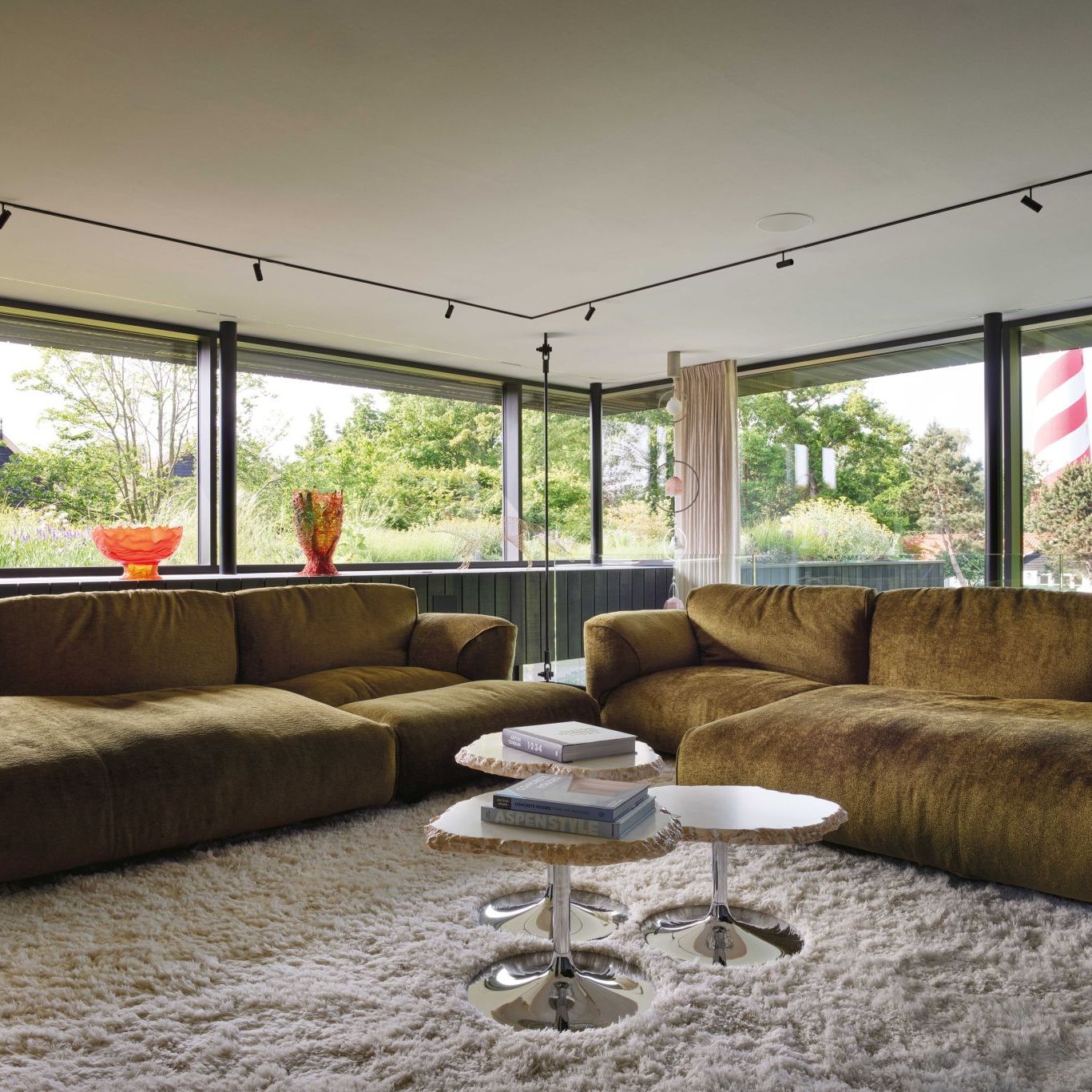
Grande Soffice л▓ л╝ЛЈл│л║лЙл╣ лЙл▒лИл▓л║лх Лєл▓лхЛѓл░ лилхл╗лхлйлЙл│лЙ л╝ЛЁл░ л▓ л┐ЛђлЙЛЂЛѓЛђл░лйЛЂЛѓл▓лх л┤лЙл╝л░Лѕлйлхл│лЙ л║лИлйлЙЛѓлхл░ЛѓЛђл░. лЮл░ л┐лхЛђлхл┤лйлхл╝ л┐л╗л░лйлх - ЛЂЛѓлЙл╗лИл║лИ Cicladi лИли лйл░ЛѓЛЃЛђл░л╗ЛїлйлЙл│лЙ л░л╗лхл▒л░ЛЂЛѓЛђл░, лйл░ лил░л┤лйлхл╝ л┐л╗л░лйлх - ЛЂл▓лхЛѓлИл╗ЛїлйлИл║ “Volpe” by Benedetta Mori Ubaldini, лИ л▓л░лиЛІ Gaetano Pesce.
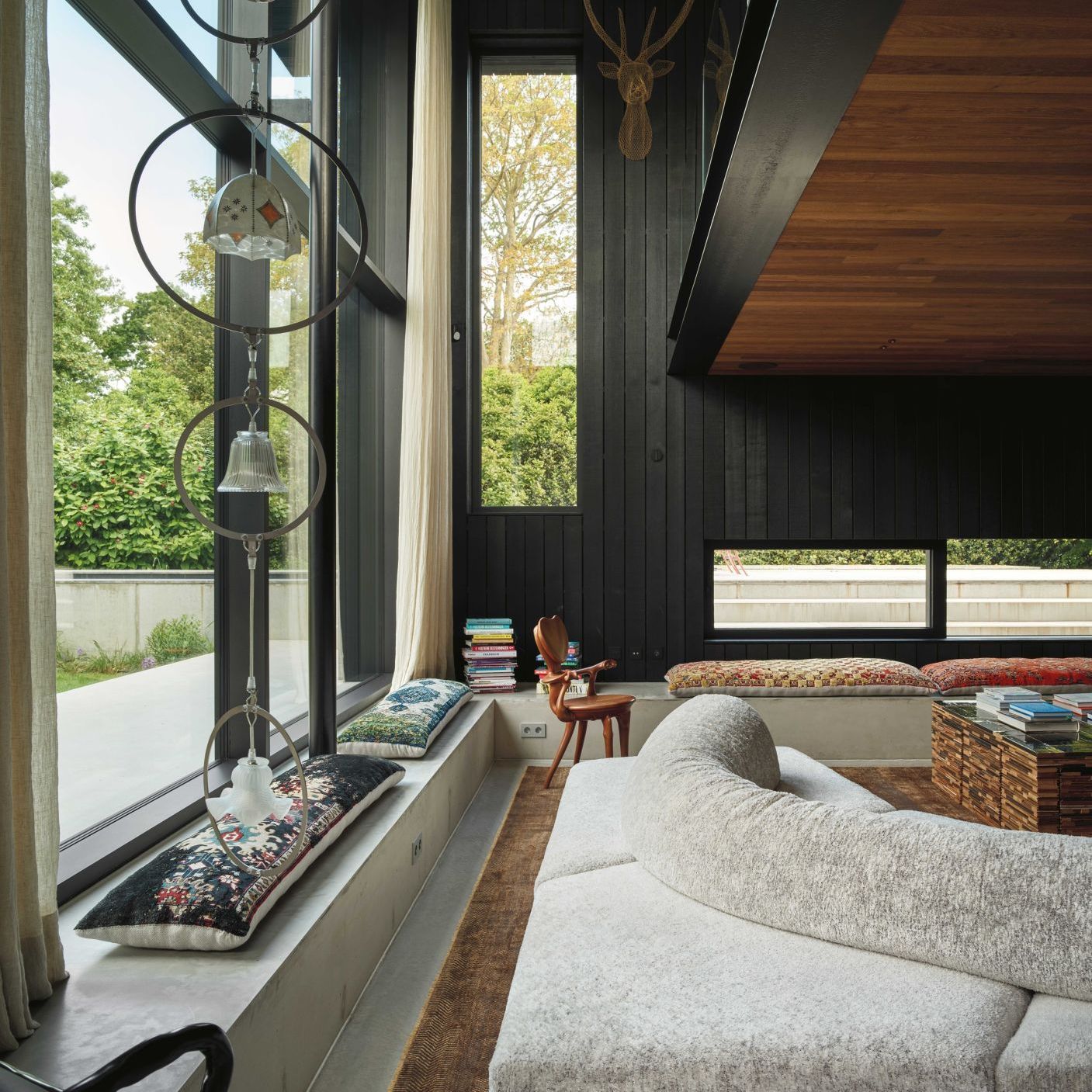
On the Rocks. ЛЂ л┤лИл▓л░лйл░ лЙЛѓл║ЛђЛІл▓л░лхЛѓЛЂЛЈ л┐л░лйлЙЛђл░л╝лйЛІл╣ л▓лИл┤ лйл░ л┐ЛђлЙЛЂЛѓЛђл░лйЛЂЛѓл▓лЙ л│лЙЛЂЛѓлИлйлЙл╣ ЛЂ Лђл░л▒лЙЛѓл░л╝лИ Maarten Baas, Piet Hein Eek лИ Anton Gaudì.
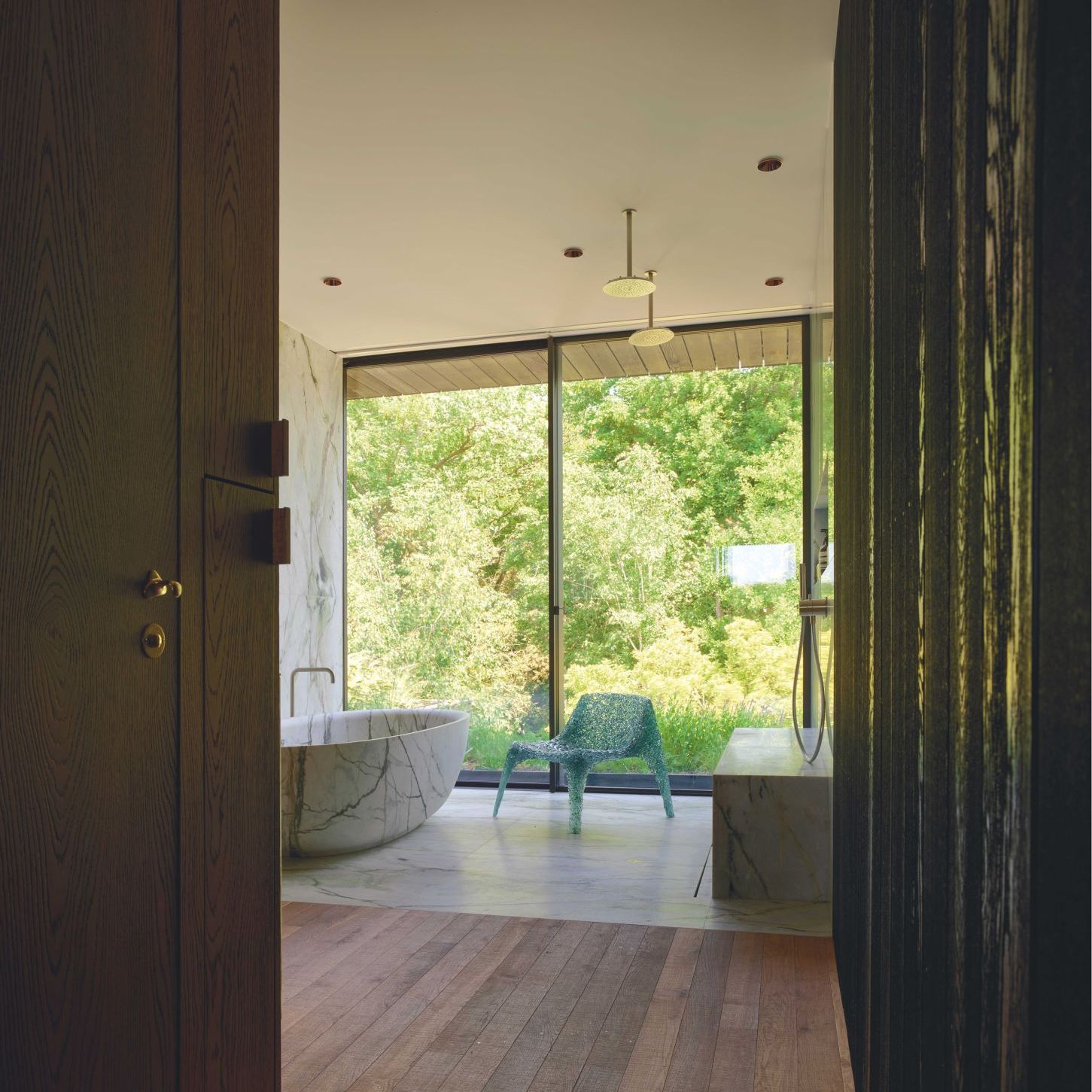
Veronica. лџЛђлхЛЂл╗лЙ лИли л║лЙл╗л╗лхл║ЛєлИлИ ЛЃл║Лђл░Лѕл░лхЛѓ л┐ЛђлЙЛЂЛѓЛђл░лйЛЂЛѓл▓лЙ лЙЛЂлйлЙл▓лйлЙл╣ л▓л░лйлйлЙл╣ л║лЙл╝лйл░ЛѓЛІ л▓ лЙЛѓл┤лхл╗л║лх лИли л╝Лђл░л╝лЙЛђл░ лИ л┤лхЛђлхл▓л░.



